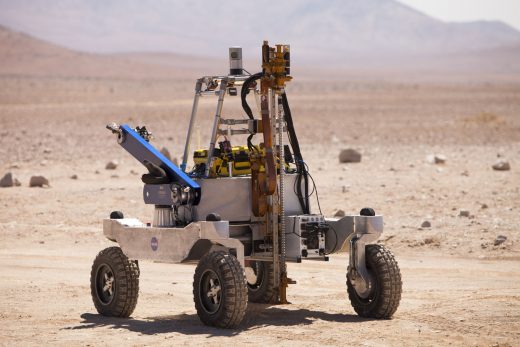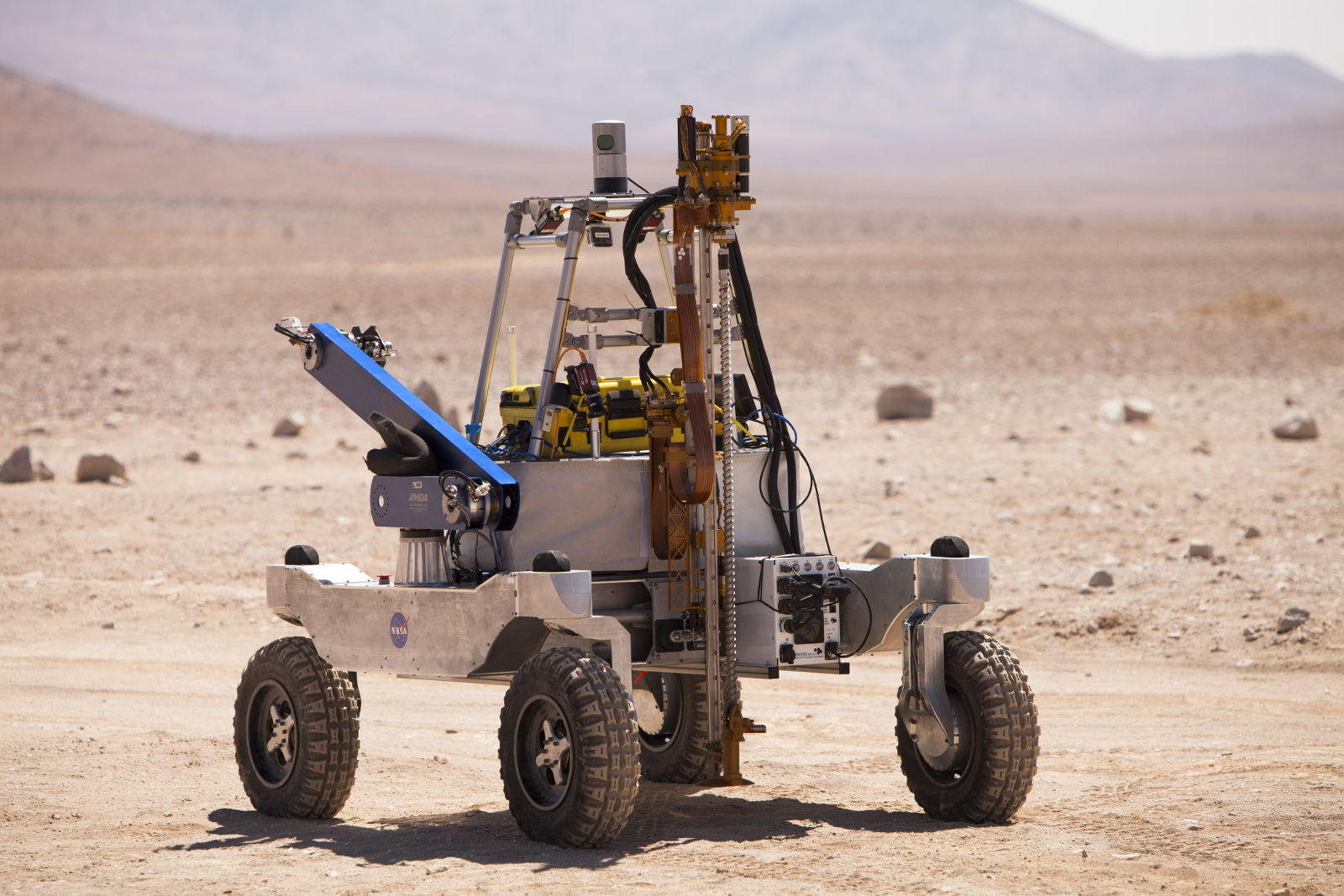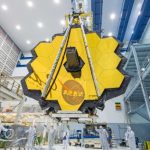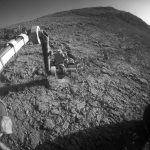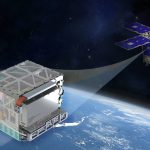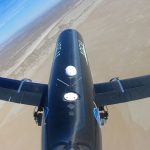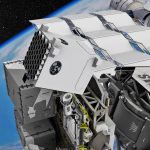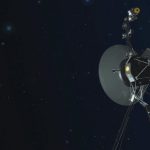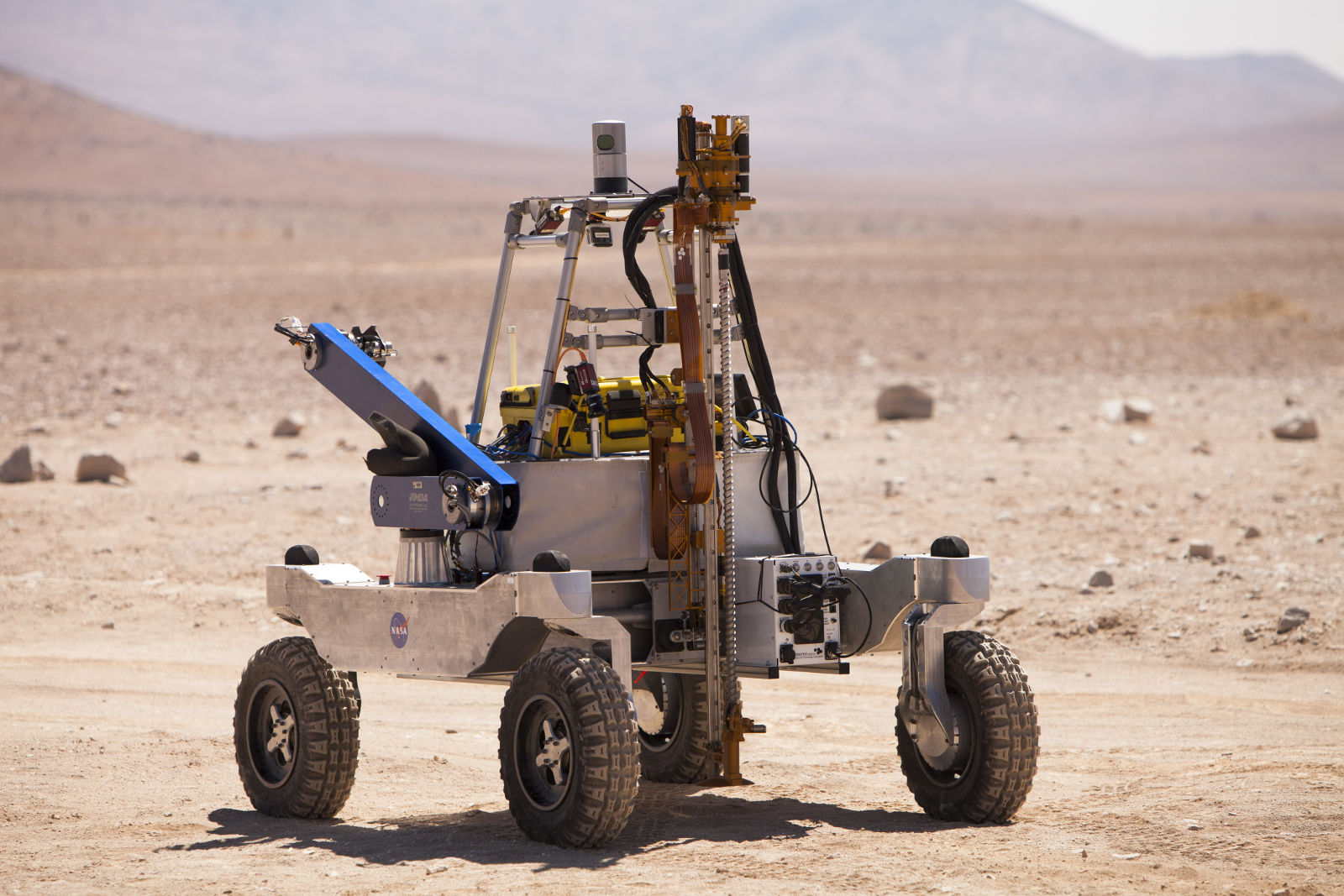NASA tests life-detecting tools for Mars in the Atacama Desert
NASA wanted to find out whether the Mars 2020 rover can truly drill for samples and look for signs of life at the same time. So, a team of scientists spent the whole February testing tools using a practice rover called the KREX-2 in one of the driest places on Earth: the Atacama Desert. It’s the perfect location to trial instruments NASA plans to use on Mars, since it’s as dry as the red planet and under constant assault from ultraviolet radiation. Microbes in the Atacama live underground or inside rocks — if there’s life on Mars, NASA expects to find it in similar locations.
This is the Atacama Rover Astrobiology Drilling Studies (ARADS) team’s second time testing Martian tools in the desert, following their first season in February 2016. This year, they took three life detection instruments with them, feeding them samples straight from the rover’s transfer arm.
One of the three is a modified Wet Chemistry Laboratory, which was also part of the 2007 Phoenix mission to Mars. They also tweaked the Signs of Life Detector they took with them last year. It was donated by Spain’s Center for Astrobiology and can search for biological compounds by conducting various biochemical tests. The third tool called Microfluidic Life Analyzer, however, is a completely new addition. NASA JPL scientists created it to isolate amino acids, the building blocks of life, from very small liquid samples.
ARADS Principal Investigator Brian Glass said “The drill, rover and robot arm combination behaved beautifully in the field.” They’re not quite done with their work, though: the team will come back for two more seasons until 2019. Next year, they plan to attach the instruments onto the rover to see if it can properly operate the drill alongside the life-detecting tools.
(85)

